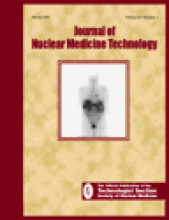Abstract
PET has emerged as a powerful diagnostic tool for the evaluation of cancer patients. Currently, most of these studies are performed with the glucose analog 18F-FDG, which has been shown to accumulate avidly in most tumors. 18F-FDG PET is now routinely used in the diagnosis, staging, and posttherapy evaluation of oncologic patients. After reading this paper, the reader should understand the physiologic basis of using 18F-FDG in patients with different tumors, describe the role of this radiopharmaceutical in the management of oncologic patients, and identify those malignancies for which 18F-FDG has proved to be effective in diagnosis and follow-up.







